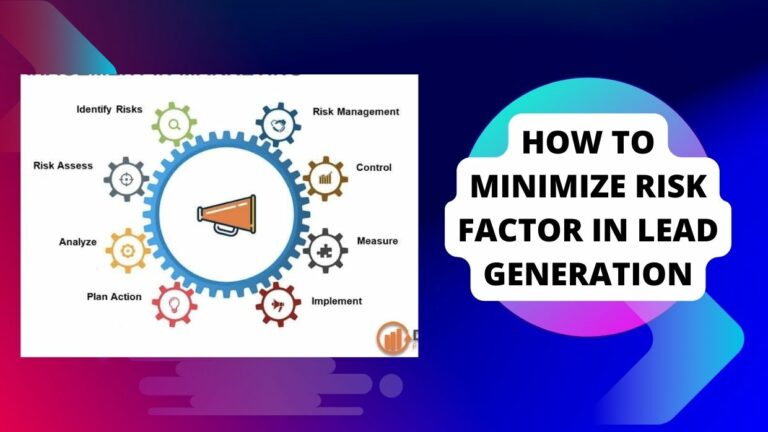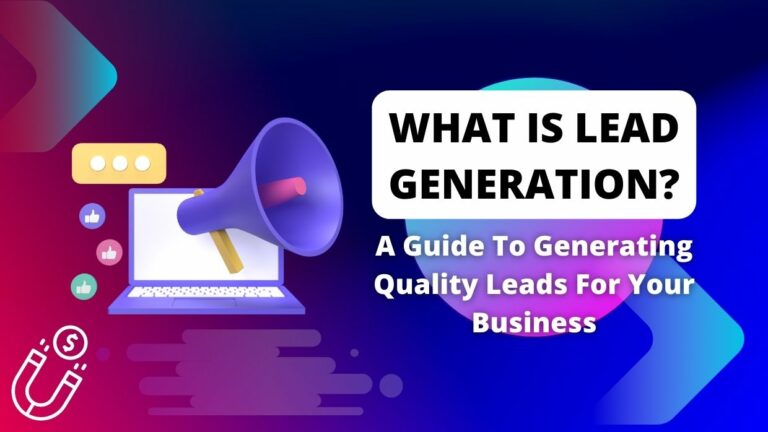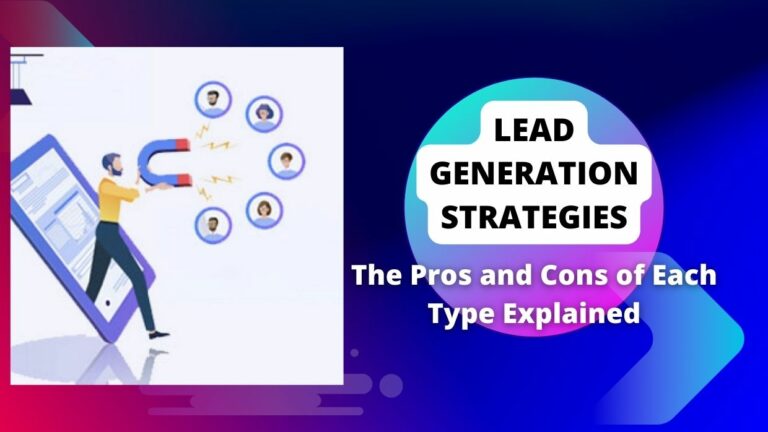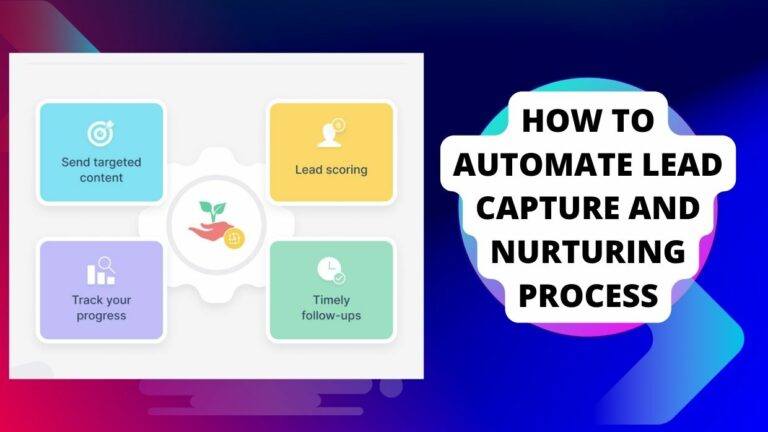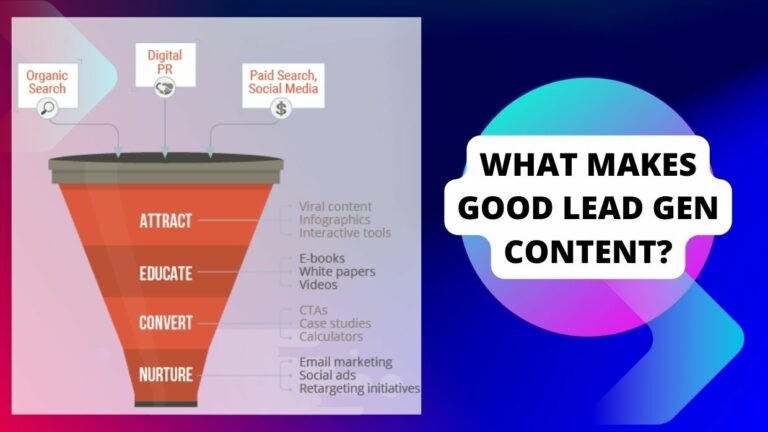How to Improve Lead Generation Process
learn “How to Improve Lead Generation Process”. Are you tired of lackluster lead generation results? Are your sales reps struggling to close deals due to subpar leads? If so, it’s time to revamp your lead generation process. In this blog post, we’ll cover actionable tips and tricks that can help boost the quality and quantity of your leads. From optimizing your website for conversions to leveraging social media platforms, we’ve got you covered. So if you’re ready to take your lead-gen game up a notch, keep reading!
What is Lead Generation
Lead generation is the process of identifying and qualifying potential customers for your products or services. It’s a critical part of any business’ sales pipeline, and it can be a complex and time-consuming process.
There are a number of different ways to generate leads, and the most effective lead-generation strategies will vary depending on your business and industry. However, there are some common best practices that can help you improve your lead generation process.
Identifying Your Target Audience
The most important step in lead generation is identifying your target audience. This can be done by considering factors such as age, gender, location, interests, and job title.
Once you have a good understanding of who your target audience is, you can begin to create content that is specifically designed to appeal to them. This could include blog posts, eBooks, infographics, and more.
By creating relevant and engaging content, you will be more likely to generate leads that are interested in what you have to offer.
Developing a Lead Gen Strategy
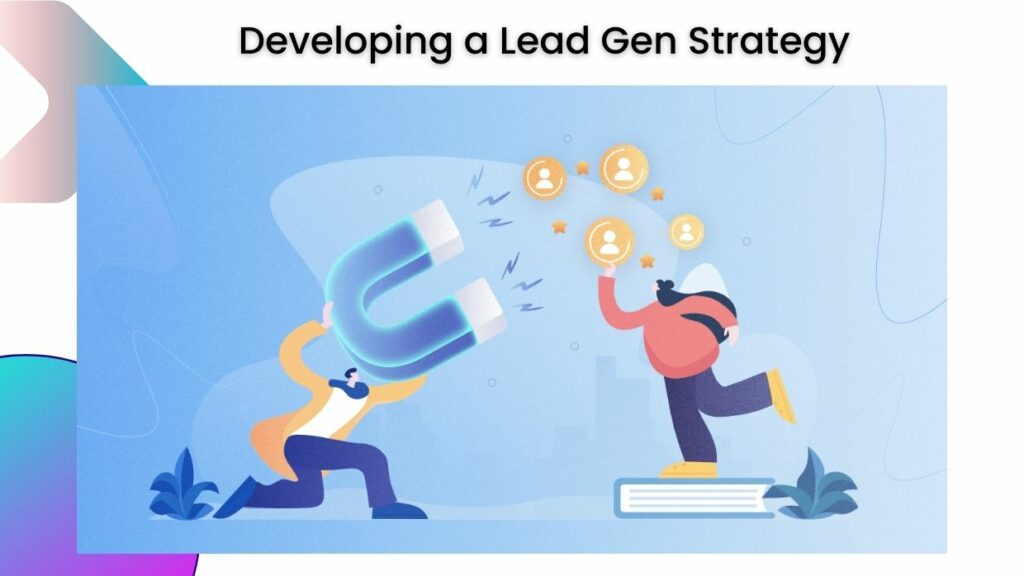
There are a number of ways to develop a lead gen strategy. The first step is to identify your target market and create a buyer persona. Once you know who your target market is, you can then determine what type of content will appeal to them and where they are spending their time online.
Once you have this information, you can start developing a content strategy that will attract leads. To do this, you’ll need to create high-quality content that is relevant to your target market and promote it through channels where your target market is active. Additionally, you’ll need to make sure your website is optimized for lead conversion with clear calls-to-action and forms that capture leads’ information.
By following these steps, you can develop an effective lead-generation strategy that will help you generate more qualified leads for your business.
Utilizing Social Media Platforms
There are a number of social media platforms that can be utilized in order to improve the lead-generation process. LinkedIn is one such platform that can be used for this purpose. It has a number of features that can be leveraged in order to generate leads.
For instance, LinkedIn allows users to create profiles and connect with other professionals in their field. This provides an opportunity to build relationships with potential customers and clients. Additionally, LinkedIn also allows users to join groups and participate in discussions. This is another great way to build relationships and generate leads.
Other social media platforms that can be used for lead generation include Twitter and Facebook. Both of these platforms allow users to connect with others and share information.
Additionally, both platforms provide opportunities for businesses to promote their products and services. By utilizing these social media platforms, businesses can significantly improve their lead-generation process.
Read more… How to Measure Social Media Engagement Rate
Automation of Lead Generation Processes
As the demand for lead generation services continues to increase, so does the need for automation. There are many benefits to automating lead generation processes, including increased efficiency and accuracy, improved customer service, and reduced costs.
When it comes to automating lead generation processes, there are a few key things to keep in mind. First, you’ll need to identify which tasks can be automated and which ones still require human intervention. Second, you’ll need to choose the right software or platform to automate your processes. And third, you’ll need to put in place a system for monitoring and tracking results.
If you’re not sure where to start, there are plenty of resources available online that can help you get started with automating your lead generation processes. Once you’ve got a handle on the basics, you’ll be well on your way to reaping the benefits of an automated lead-generation process.
Optimizing Landing Pages and Forms
When it comes to lead generation, your landing pages and forms play a critical role. By optimizing these key elements, you can ensure that your leads are more engaged and more likely to convert.
Here are a few tips for optimizing your landing pages and forms:
- Keep it simple. The simpler your pages and forms are, the easier they will be to complete. Don’t ask for too much information upfront – you can always collect additional data later on in the process.
- Make sure your forms are mobile-friendly. With more and more people accessing the internet from their smartphones, it’s essential that your forms are easy to fill out on a small screen.
- Use engaging visuals. Include images or videos on your landing pages to help break up the text and make the page more visually appealing. This can also help explain complex concepts or products in an easily digestible way.
- Use compelling copy. Your copy should be clear, concise, and persuasive. It should explain what the user will get by filling out your form or taking action on your landing page.
- Offer something of value. In order to get people to sign up for your newsletter or download a white paper, offer something in return that is truly valuable to them. This could be an e-book, exclusive discounts, or access to valuable content or resources
Measuring the Performance of Your Lead Gen Process
You can’t improve your lead generation process if you don’t measure its performance. That’s why it’s important to track key metrics such as the number of leads generated, the conversion rate, and the cost per lead.
By tracking these metrics, you’ll be able to identify areas of improvement and make changes that will help you generate more leads and convert more of them into customers.
To get started, take a look at your leads over the past month or two and compare them to your sales. How many of your leads turned into customers? What was your conversion rate?
Next, calculate your cost per lead. This is the amount you spend on marketing and advertising divided by the number of leads generated. For example, if you spend $1,000 on marketing and generate 100 leads, your cost per lead is $10.
Finally, take a look at your close rate. This is the percentage of leads that turn into customers. If you have a high close rate, it means that your lead-generation process is effective. If you have a low close rate, it means that you need to work on converting more of your leads into customers.
By measuring these key metrics, you’ll be able to see how effective your lead-generation process is and make improvements accordingly.
A/B Testing Strategies for Improving Lead Gen Results
A/B testing, also known as split testing, is a method of comparing two versions of a web page to see which one performs better in terms of generating leads. The most common type of A/B test is a split test, where the traffic to the web page is divided between the two versions (Version A and Version B) and the results are measured to see which version performed better.
There are a number of different factors that can be tested as part of an A/B test for lead generation, including:
- The headline or title of the web page
- The call-to-action (CTA) on the web page
- The form fields on a lead capture form
- The layout of the web page
- The images used on the web page
Testing different elements of your lead generation process is vital to ensure that you are constantly improving your results. By running regular A/B tests, you can fine-tune your process and make small improvements that can have a big impact on your overall lead generation results.
Conclusion
Lead generation processes are essential for any business to succeed, and improving them can significantly boost your organization’s performance. By utilizing the right tools such as marketing automation software, optimizing your website design, creating effective content, and maintaining a consistent brand presence across multiple channels, you can improve lead generation in no time. With these tips in mind and the proper implementation of tactics tailored to your company’s needs, success is sure to follow!


